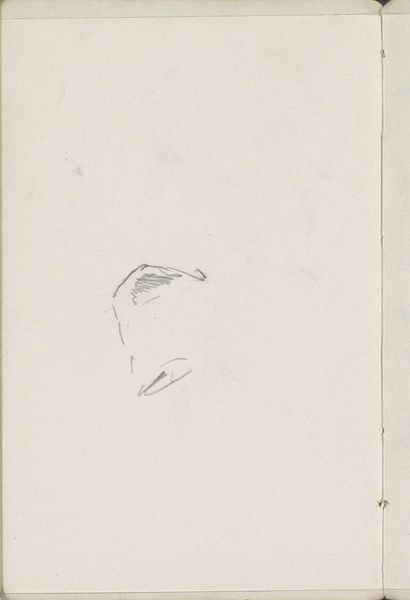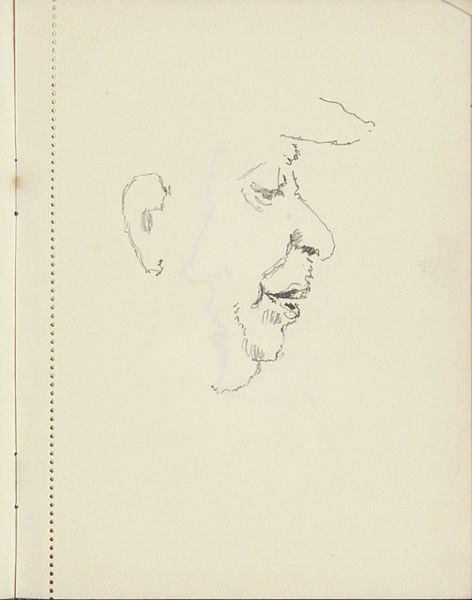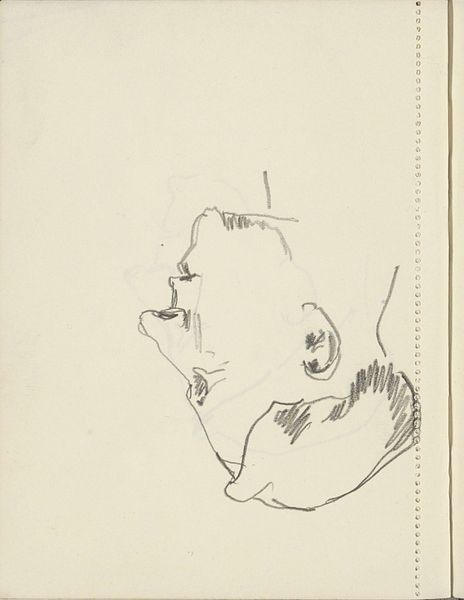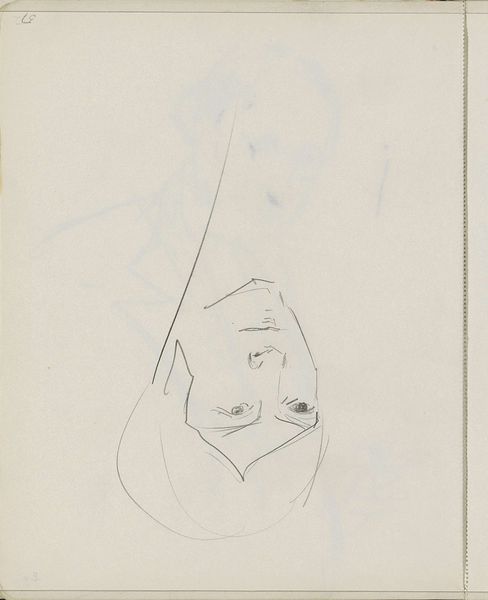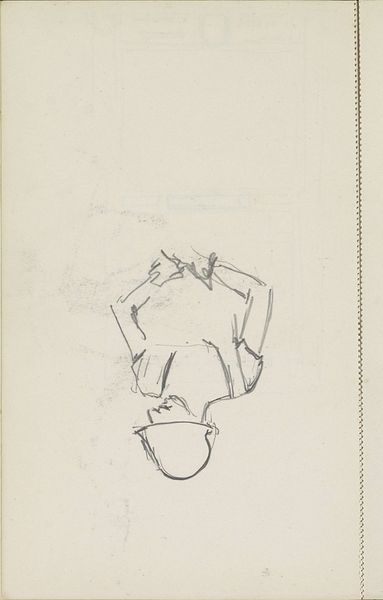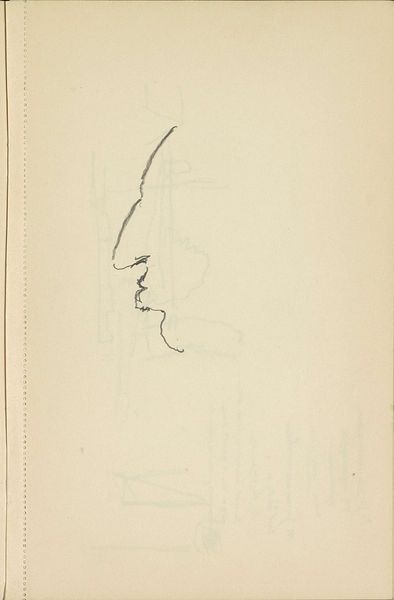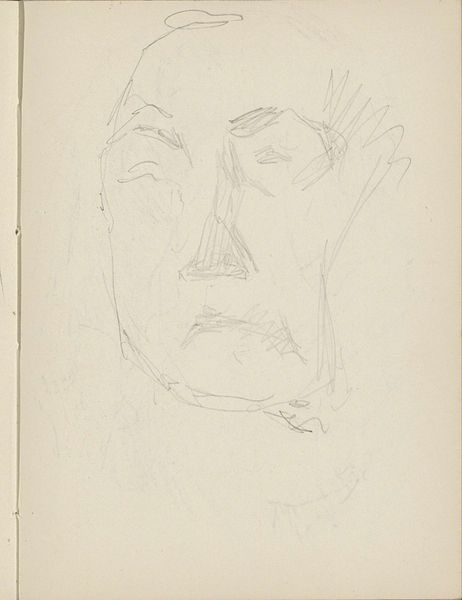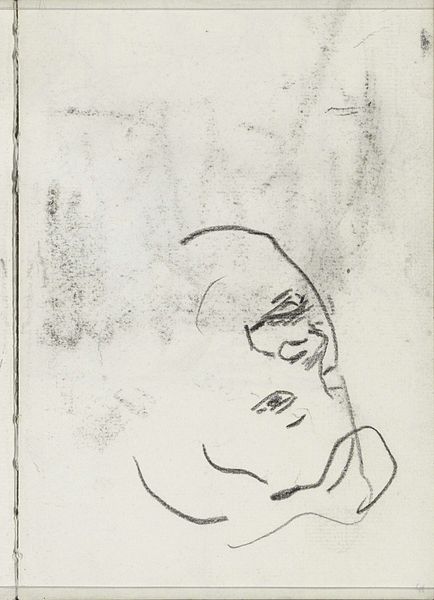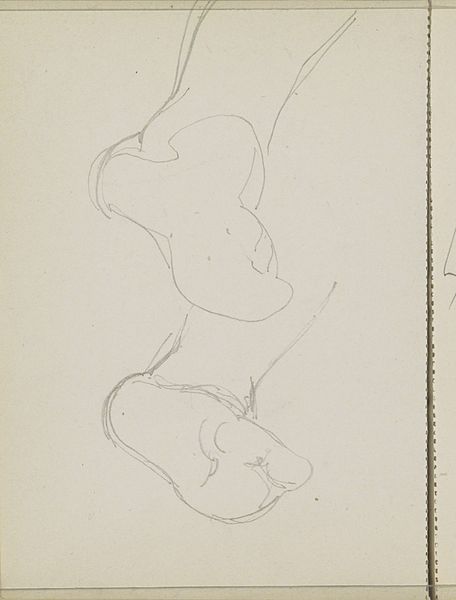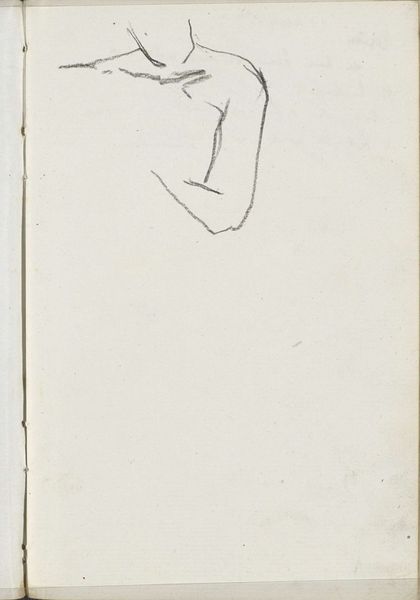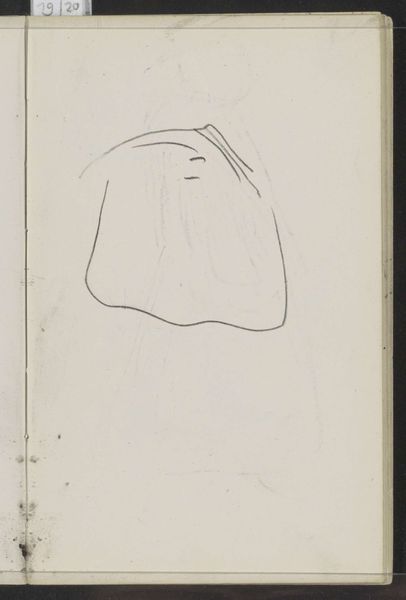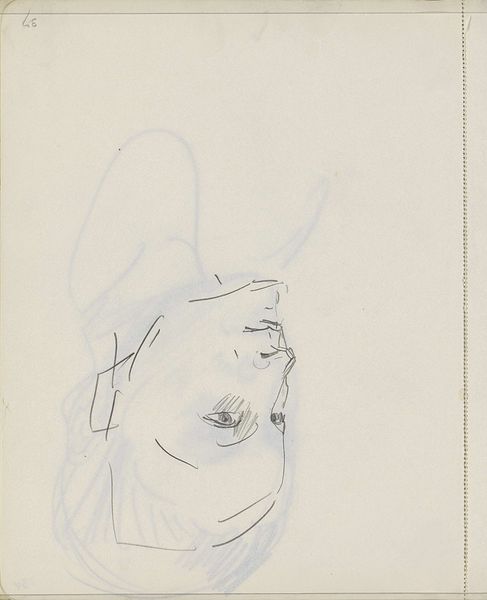
drawing, pencil
#
portrait
#
pencil drawn
#
drawing
#
figuration
#
pencil drawing
#
pencil
#
modernism
Copyright: Rijks Museum: Open Domain
Editor: This is "Head of an African Man," a pencil drawing created sometime between 1916 and 1945. It's a very minimal sketch; it feels unfinished, but somehow compelling. What can you tell me about this piece? Curator: Let's consider the material realities. A pencil drawing – a readily available, inexpensive medium – depicting an African man during a period of intense colonial activity. It immediately raises questions about production and consumption. Was this a quick study, a preparatory sketch for something grander, or a finished work in itself? The labor involved is minimal, yet the social implications are potentially vast. Editor: Social implications, how so? Curator: The choice of subject, rendered in such a rudimentary manner, invites examination. Is this a depiction from life, or from existing representations? And how does the artist’s position within the social structure impact the representation? This drawing itself is a material object caught in the web of colonial power dynamics, reflecting perhaps, unequal power relations embedded within its creation and subsequent interpretation. What do you make of its apparent unfinished state? Editor: I suppose it challenges our conventional ideas about artistic 'completion.' The artist chooses to present a sketch. Curator: Exactly! Think about the materials further. The graphite, the paper – how are those materials sourced, processed, and consumed within a global market that reinforces historical imbalances? Where does the paper come from, and what labor created it? Editor: I see what you mean. By focusing on the materials and context, it prompts you to really think about its creation and the wider world. Curator: Precisely. It compels us to look beyond purely aesthetic concerns and recognize art's relationship to larger social structures of labor and material exchange.
Comments
No comments
Be the first to comment and join the conversation on the ultimate creative platform.

